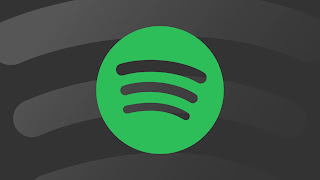COMPARATION REVIEW: SPOTIFY VS YOUTUBE MUSIC
Spotify
and YouTube are two popular music streaming platforms that provide distinct
approaches to music consumption. Here's how Spotify and YouTube compare:
Content
Library:
Spotify
is a dedicated music streaming platform with a vast library of over 70 million
songs, including certified music from various record labels and artists. It
also provides podcasts and audiobooks. YouTube, on the other hand, is a
video-sharing platform that also hosts a large amount of music content,
including official music videos, user-generated content, live performances, and
covers. YouTube's music library is virtually limitless, but it may not always
have official versions of all songs.
Ad-supported vs Ad-free:
Spotify
has a free, ad-supported version as well as a premium, ad-free version. The
free version contains advertisements as well as limitations such as shuffle
play and offline listening restrictions, whereas the premium version provides
an enhanced experience without advertisements as well as additional features
such as offline listening and higher audio quality. YouTube also has an
ad-supported version with ads that interrupt music playback, but it also offers
YouTube Premium, a subscription-based service that includes an ad-free
experience, offline playback, and other exclusive features.
Audio
Quality:
For premium users, Spotify provides different
audio quality options for streaming, including Normal (96 kbps), High (160
kbps), and Very High (320 kbps), allowing them to select the desired sound
quality. The audio quality on YouTube can vary depending on the source of the
content, with some videos offering high-quality audio and others offering lower
audio quality due to user-generated content or video compression.
User Experience :
Spotify
is primarily a music-focused platform with an easy-to-use interface that
enables users to create playlists, discover new music, follow artists, and
interact with other users. It makes recommendations based on your listening
habits and preferences. YouTube, on the other hand, is a video-sharing site
that also hosts music. While it includes features such as playlists and
personalised recommendations, its interface is more video-centric, and the
music playback experience may be less streamlined than Spotify's dedicated
music interface.
In my opinion, both Spotify and
YouTube have unique features that cater to different tastes. Spotify is a
dedicated music streaming platform with an easy-to-use interface, personalised
recommendations, and a large music library, whereas YouTube is a video-sharing
platform with a large music library, user-generated content, and a more
video-centric experience. Individual preferences, such as preferred user
experience, content library, audio quality, and budget, heavily influence the
decision between Spotify and YouTube. Our group
decided and agreed to choose Spotify over YouTube Music because it offers more
benefits to users.




Comments
Post a Comment